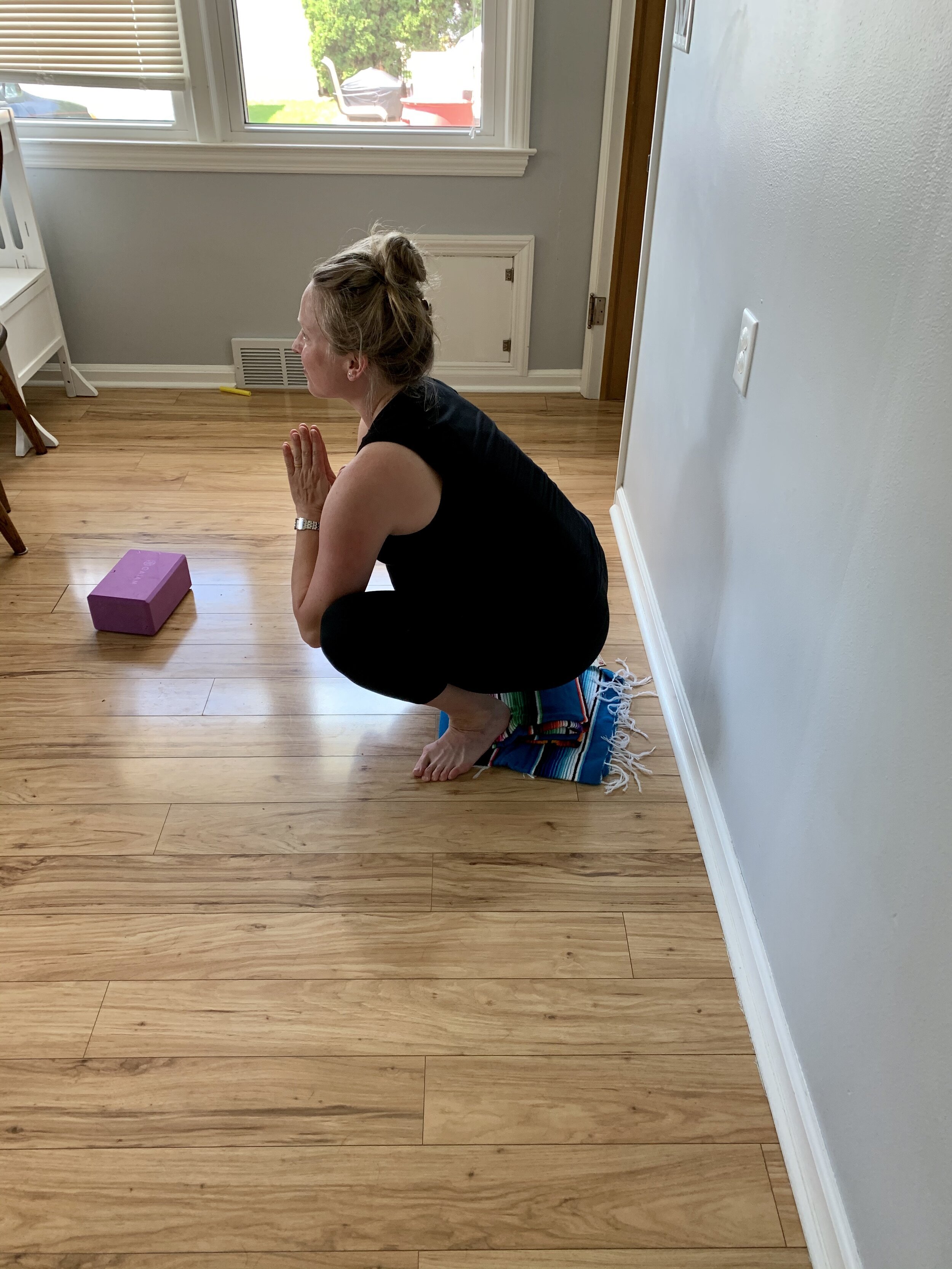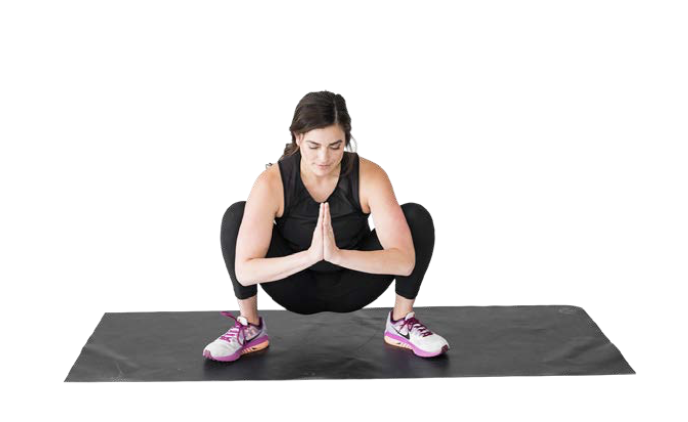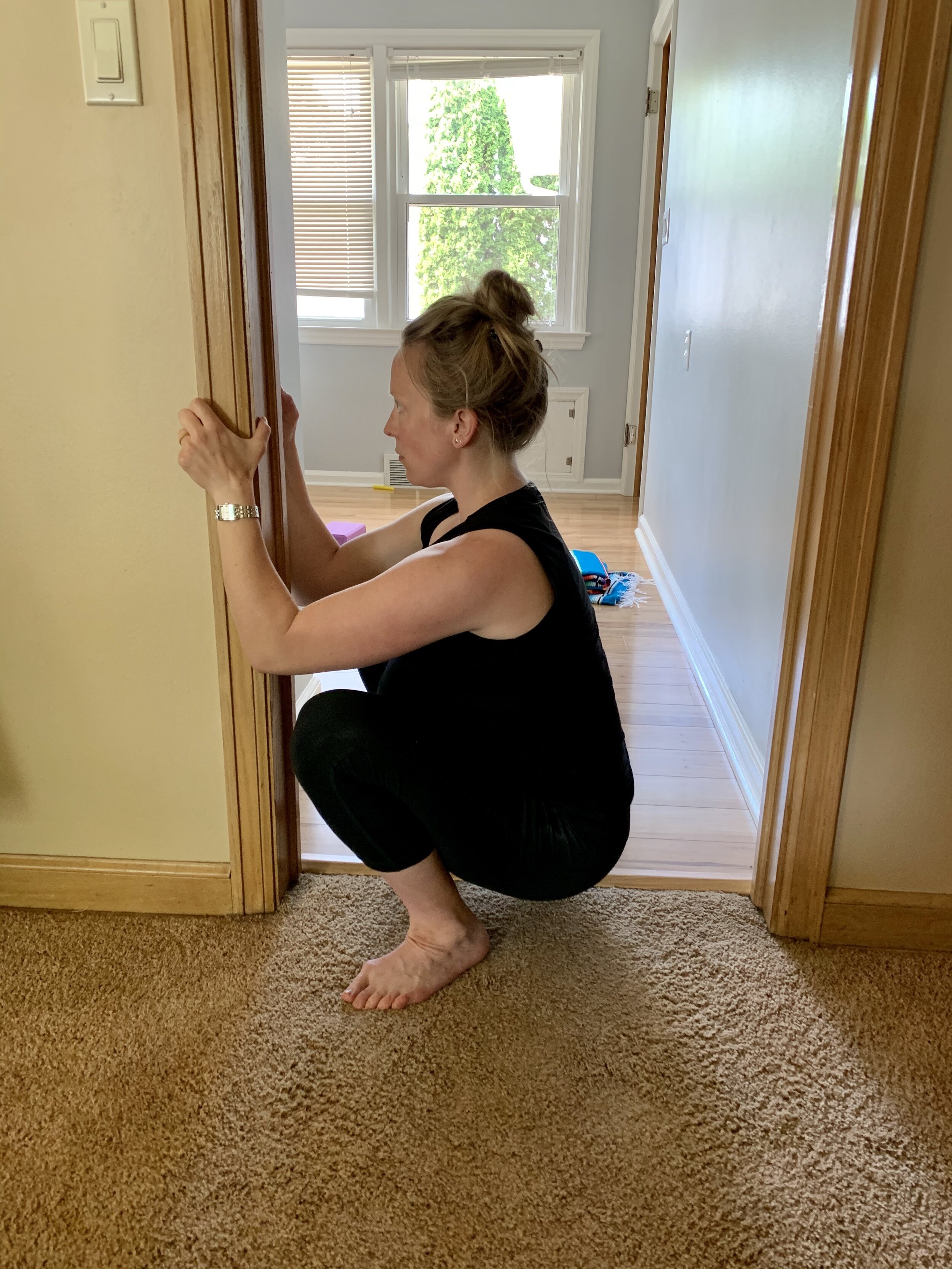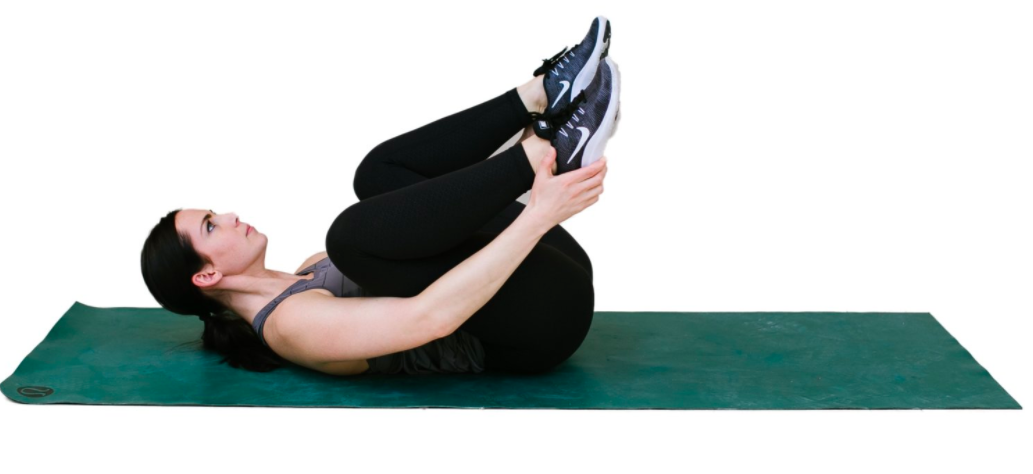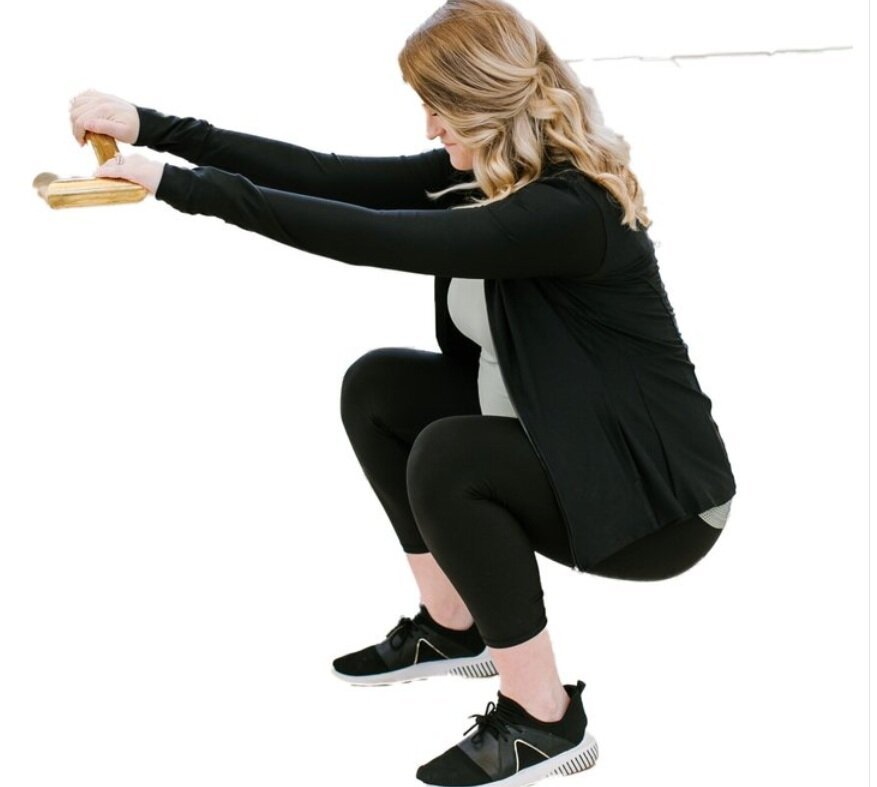Late Third Trimester: Getting Pelvic Floor and Pelvis Ready for Birth
See our more extensive post HERE about general labor and delivery preparations
I am 38+ weeks pregnant and officially ready to have this baby. There are many ways that I am prepping physically for labor (while also trying to induce it naturally!)
Squatting to relax and open the pelvic floor
I’ve been working more deep squatting positions into my repertoire to help open up the pelvis and get ready for labor. The following moves should help to relax and stretch the pelvic floor:
Ways to change-up or modify your squat:
Happy baby pose
Add pillow(s) under head and upper back as you need to. This gives your pelvic floor and hips all the beautiful mobility of a squat with none of the worries that cane come with feelings of pressure in weight bearing
Half happy baby
This one is probably better for most people at the end of pregnancy, you can hold it as long as you like! This is also great for anybody with pelvic heaviness with squatting or prolapse concerns.
Half happy baby pose
Static Squat at Counter (option to add block under butt)
Begin with your feet wider than shoulder width apart. You can place a yoga block or low chair or stool behind you as a target. Squat, holding on to a railing or counter. Squat all the way down until you touch your butt to the block. You should feel a good stretch in your hamstrings and focus on opening up your pelvis with this stretch. Practice the visualization techniques of the diaphragm and pelvic floor gently lengthening
Deep Squat with Block
Stand with your feet wider than shoulder width apart. Place a yoga block or low chair or stool behind you as a target. Squat all the way down until you touch your butt to the block/chair. You should feel a good stretch in your hamstrings and focus on opening up your pelvis with this stretch. Practice the visualization techniques described above as you do this.
Downward Dog:
Move to an inverted V position with your elbows and knees straight. Get your heels as close to the ground as possible, shifting weight into your feet. Set your shoulders by pretending to rotate your hands outward through the ground. A good visual: pretend you are pushing your hands into the ground and rotating the whole arm outward like a screwdriver, but your hands stay in the same place. This should allow you to feel your shoulders turn on. Hold this position, feeling a stretch through your back and legs. Come back onto all fours and then shift your weight forward into your hands and then backward onto legs. Repeat.
You can also modify the range of motion for this one, bringing your elbows up onto a chair for a modified downward dog!
Modified downward dog
Working on Breathing:
Diaphragmatic Breathing
Start by lying on your back. Place your hands on your bottom ribs with your fingers facing forward underneath your bust and your thumb wrapped around the back. Take a deep breath in. When you inhale, your pelvic floor relaxes. To achieve excursion of your diaphragm, try to minimize the movement of your chest and breathe into your lower ribs. This is NOT simply belly breathing. Breathing forcefully into the belly can create extra pressure on the front side of the abdominal wall. During this we are trying to coordinate your diaphragm with your pelvic floor. Take a deep breath in and allow your pelvic floor to relax. When you exhale your pelvic floor should activate automatically. Practice for two minutes.
Gail Tulley is a midwife from Minnesota who has some really wonderful techniques to help not only with baby’s position in the uterus but for comfort and to help baby come down into the pelvis. In her words, “baby has to get into the pelvis in order to go through the pelvis!”
Spinning Babies "Fantastic 4" is a really nice description of some gentle techniques that can help with both mom’s comfort and progression of labor.
Walking:
Getting upright and moving can help encourage the body to move towards labor! I’ve seen The Miles Circuit recommended countless times. It is movement-based and involves a modified inversion, left sidelying, and walking along a curb to help encourage labor!
Exercise:
Continuing with the E+E Pregnancy Program is one of the best ways to maintain strength. My hope is to use a variety of different positions during labor and delivery this time around, so I’m really going to need to keep up my stamina!
Having Sex:
It is very plausible that sex could help! Sex can result in orgasms releasing oxytocin and stimulating labor contractions, nipple stimulation, and semen has chemical components that may help with cervical ripening. Unless you have been explicitly told to not have sex, there seems to be little reason to abstain!
Having sex is generally safe during the final weeks of pregnancy, but you shouldn’t have sex after your water has broken as this puts you at increased risk for infection.
Nipple Stimulation:
There are a lot of protocols on this on the internet. A lot of them are LONG, involving 2+ hours of nipple stimulation daily. Check with your doctor if this would be a good strategy for you.
Labor-inducing foods:
There are a lot of resources on the internet claiming that different foods can help to induce labor. Options with little potential for bad side effects include:
Dates
Pineapple
Spicy foods
Red Raspberry leaf tea
Physical Therapy:
My third trimester physical therapy sessions have focused on opening up my back and pelvis, restoring my hip mobility, and generally getting my spine moving well again. If you have the time and wherewithal to do so, getting some bodywork done late in pregnancy can be a real game-changer!
Perineal Massage:
Perineal massage has been shown to decrease tearing during vaginal births: perform in your bed with your back supported with pillows OR in the shower with one foot propped up on the edge of the tub!
Pelvic Floor Coordination:
Pelvic floor “bulging” is a relaxation beyond what normal resting position. Resting tone is the low-level of tension any muscle holds when it is relaxed. Your pelvic floor is always “on” to some extent, but you should not be actively contracting it at all times.
Bulging is what the pelvic floor should be doing ideally to help with emptying during pooping and during childbirth. For people who have had very tight pelvic floors for a long time may need to incorporate this into their daily habits to reset their pelvic floor.
To review:
Pelvic floor contraction= lift and tighten
this is how the pelvic floor responds to exercise and increases in abdominal pressure
Pelvic floor relaxation= let the pelvic floor come back down to resting position
this is where the pelvic floor lives the majority of the day
Pelvic floor bulge= pelvic floor gently lengthens and descends down further than where it typically rests
this is what we need the pelvic floor to do during pooping, vaginally birthing a baby, and as a supplemental exercise to help people who tend to keep their pelvic floors too tight
Acupuncture and Acupressure:
There is some research to show acupuncture may help to ripen the cervix.
Acupressure may reduce labor pain and labor duration, but acupressure has not been found to increase cervical ripening or induce labor. There are insufficient studies about acupuncture and acupressure and their effects on labor at this time, and there is need for further research. Areas of uncertainty include efficacy, optimal pressure point selection, best techniques, and length of time for point stimulation.
Rebecca Dekker does a beautiful job on the Evidence Based Birth Podcast of reviewed the pertinent medical evidence on virtually all important topics surrounding birth!
Liesel Teen aka Mommy Labor Nurse also has a wealth of info on her website and instagram, in addition to birthing classes!
Hang in there mama!
Need more help?
Schedule an Online Wellness Session with one of our women’s health physical therapist

